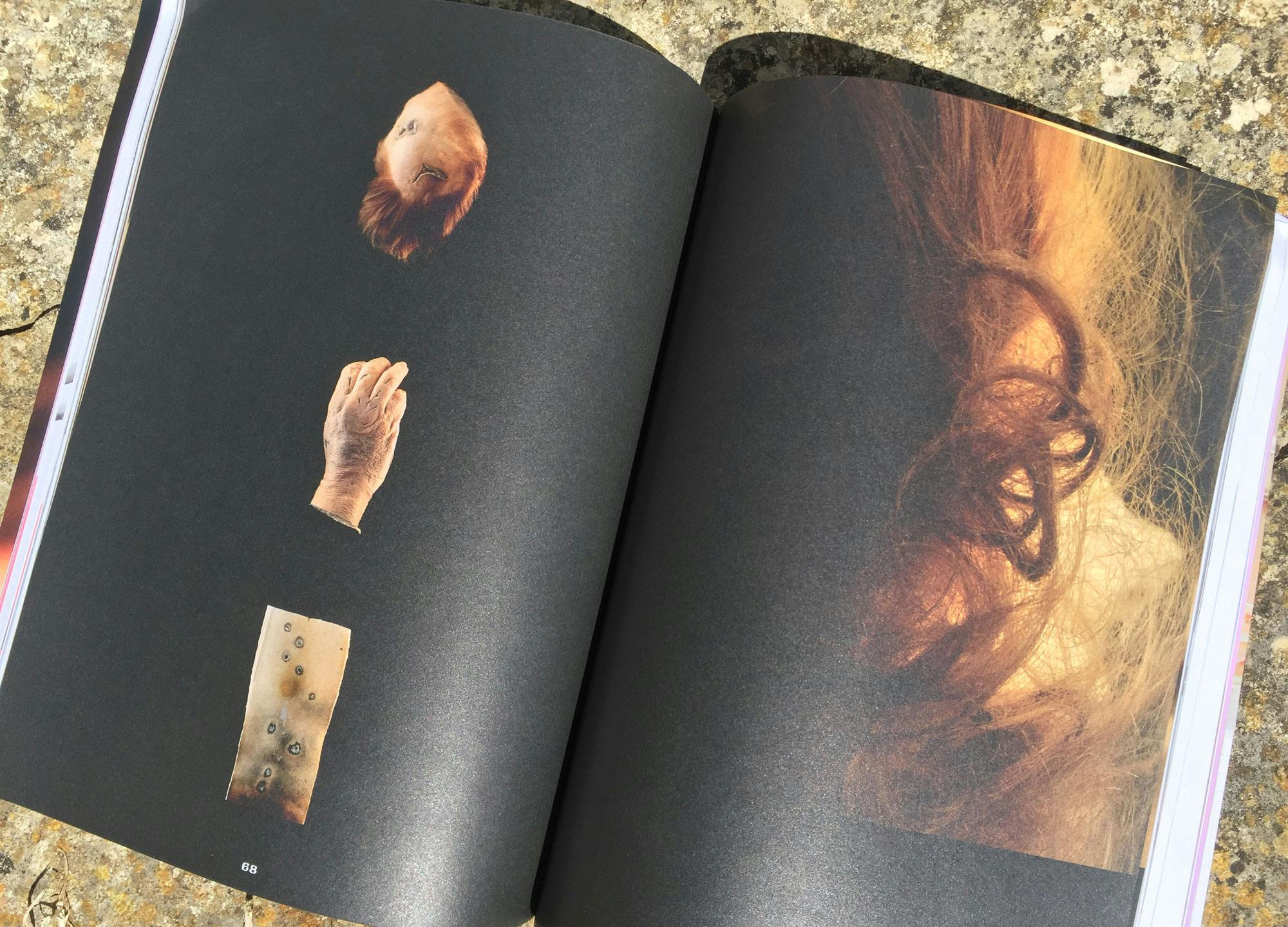“Nobody expects fame, glory or success to be handed to them on a plate”
A Latvian-born magazine with a focus on sex and gender, Jezga’s third issue is themed around the body. Some of the content is visceral: in one interview, the artist Mētra Saberova talks about why she decided to sterilise herself for her art practise, and reconstruct her own hymen. More painfully, Jezga prints a series of photographs of severed body parts by Sandra Vitaljic, created after years collecting police reports of killings in partner relationships.
But the most striking pieces about bodies have a less direct relation to the theme. A mini-essay about park benches tells a story about Adelaide, Australia, where the council did not declare outright war on the homeless population, but instead replaced all wooden benches in the city with metal ones: if you sat down in summer, you burnt, and in winter, you froze. Another pearl is a wonderfully abstract Q&A with the photography duo Synchrodogs. The question “In what way does your heritage influence you?” is answered with two photographs of naked people, climbing trees.
Editor-in-chief Anna Rosova and design director Will Meighan talked us through the issue.
There is a dialogue between Riga and London established in the issue. The piece on park benches, for example, was written in London and “interpreted” by a series of photographs taken in Riga. Can you talk a little bit about that dialogue, and why it’s important to the magazine?
Will Meighan: Our goal has always been to create a platform for artists and creators from Eastern Europe to be seen and heard beyond their own borders. Despite being such a creatively prolific area, it’s often under-represented on the world stage (overlooked and subsumed by its Western European siblings).
Anna Rosova: A lot of our contributors, myself included, have grown up outside of their home country, or moved away at a later stage. It’s important for us to take where we are now — in my case that’s London — and use it as a starting point to connect with our heritage.
I was struck by this line, in the Mētra Saberova interview: “There’s a difference between Eastern European feminism and Western feminism”. Can you tell me about that difference?
Anna: I can only answer this from a personal perspective. Some of the battles we fight in London, regarding equal pay or even total equality for men and women, are much further away in terms of achievability in eastern Europe, where patriarchy has been ingrained in post-Soviet society. The perception at large is that women have to want marriage and children, they have to always be made-up and ‘feminine’ — and I think part of what Mētra is doing with her work is challenge those perceptions.
Earlier this year I read an interview with a prominent Latvian socialite where she said that women should be ‘women’, it’s disgusting when women drink beer, and that a great pleasure in her life is receiving gifts from her man, and not earning more than him. I believe that there’s a younger generation challenging these views, but some still follow them — the difference between those two types of feminism could come simply from the amount (or lack) of progress made so far.
It’s easy to forget that Latvia has only been a truly independent country for less than 30 years. Society in Latvia is still extremely homogeneous — not at all diverse — so there is a certain limitation in what ways feminism is explored. In London it’s harder to shock and push boundaries, as there is already so much noise. Having a wider set of cultures and perspectives in western Europe, there are so many more angles one has to consider — which might be both interesting, as well as a challenge, for someone who comes from a much more limited environment.
The issue is split between ‘Body as canvas’ and ‘Body as tool’. Why are ‘canvas’ and ‘tool’ such significant themes for you?
Will: The format of the magazine is literally carved down the middle of the spine, creating two sides that make a whole. We wanted to create something more tangible than usual, encouraging readers to flip and rotate the magazine, and to really engage with it physically. What we wanted was for the issue to remind readers to engage with their own bodies.
Anna: Splitting the theme of the body under the labels of ‘canvas’ and ‘tool’ felt like a representation of the creative process. Those two objects are the sides of creation for the archetypal artist; the input and output, the action and the result. Through this issue we explore how you can use your body to create, or let your body be the creation.
The focus of your last issue was on youth culture in the former eastern Bloc. Is that still the focus?
Anna: Youth culture in the former eastern Bloc is part of our DNA, and it will always be important to us, but as we grow and evolve, we also want to show what kind of work the same artists create when they move elsewhere. Are the influences from home still visible? In what way is the work different?
Will: As an outsider to the culture (my own background is British/Irish), my perspective probably more similarly matches that of many of our readers. From travelling, conducting interviews, seeing exhibitions and meeting the people we feature, the main thing I’ve noticed is an undeniable drive and DIY attitude — nobody seems to expect fame, glory or success to be handed to them on a plate (and many aren’t even looking for this, but simply create work because they feel an absolute need to do so). Every time I visit, I’m inspired by that balance of realism and optimism.











